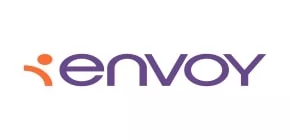Overview
As noted in our November 2021 Visa Bulletin post, significant retrogression related to the EB-3 category occurred. Here are some questions and considerations for those who are impacted by a retrogression.
What is a Priority Date?
A priority date represents a foreign national's place in line for the green card they are waiting to obtain. The priority date for employment-based cases usually corresponds with when the PERM labor certification was filed with the Department of Labor (DOL).
The U.S. State Department releases a Visa Bulletin every month. The State Department will use one of two charts for the current month's Visa Bulletin. One chart is the "Final Action Dates" chart, which means that a number is available for applicants if their priority date comes before the cutoff date listed on the chart. The second chart that the State Department may use is the "Dates for Filing" chart. This chart indicates when the individual can apply for a visa. An adjustment of status application may be filed if the applicant's priority date comes before the filing date listed in the chart.
For employment-based cases that do not require a PERM certification, the priority date is the I-140 filing date. More detail about priority dates and the Visa Bulletin is found here.
What is Visa Retrogression?
Every month, the U.S. State Department Visa Bulletin reveals how priority dates move (or don't move) for foreign nationals seeking to adjust from temporary status to permanent resident. Movement is dependent on various factors. How many Adjustment of Status applications were received by U.S. Citizenship and Immigration Services (USCIS) in the previous month and the allocation of the Congressional annual limit are both factors that could relate to this movement.
Foreign nationals with a priority date appearing after the cut-off date listed on the Visa Bulletin will be "retrogressed", essentially meaning the USCIS review of their pending Adjustment of Status application (if already filed) will be put on hold until their priority date becomes current again.
What Does This Mean for Me if I'm Retrogressed?
If your priority date was previously current and an adjustment of status case is pending for you and your family, your I-485 adjustment of status application will be put on hold until your priority date once again becomes current. However, your Advance Parole and Employment Authorization Document (AP/EAD) combo card will be processed and can be renewed even while your case is retrogressed.
Individuals should note that Form I-140, Immigrant Petition for Alien Worker, is not impacted by retrogression. The form will continue to be adjudicated as usual even if an applicant is in retrogression.
If I'm Retrogressed, Can I Travel Internationally?
If your AP/EAD combo card is pending and you exit the U.S., the AP will likely be considered abandoned by USCIS and therefore denied by the agency. Pausing international travel until after an AP/EAD combo card is approved is a typical strategy.
Originally published OCTOBER 22, 2021
The content of this article is intended to provide a general guide to the subject matter. Specialist advice should be sought about your specific circumstances.

